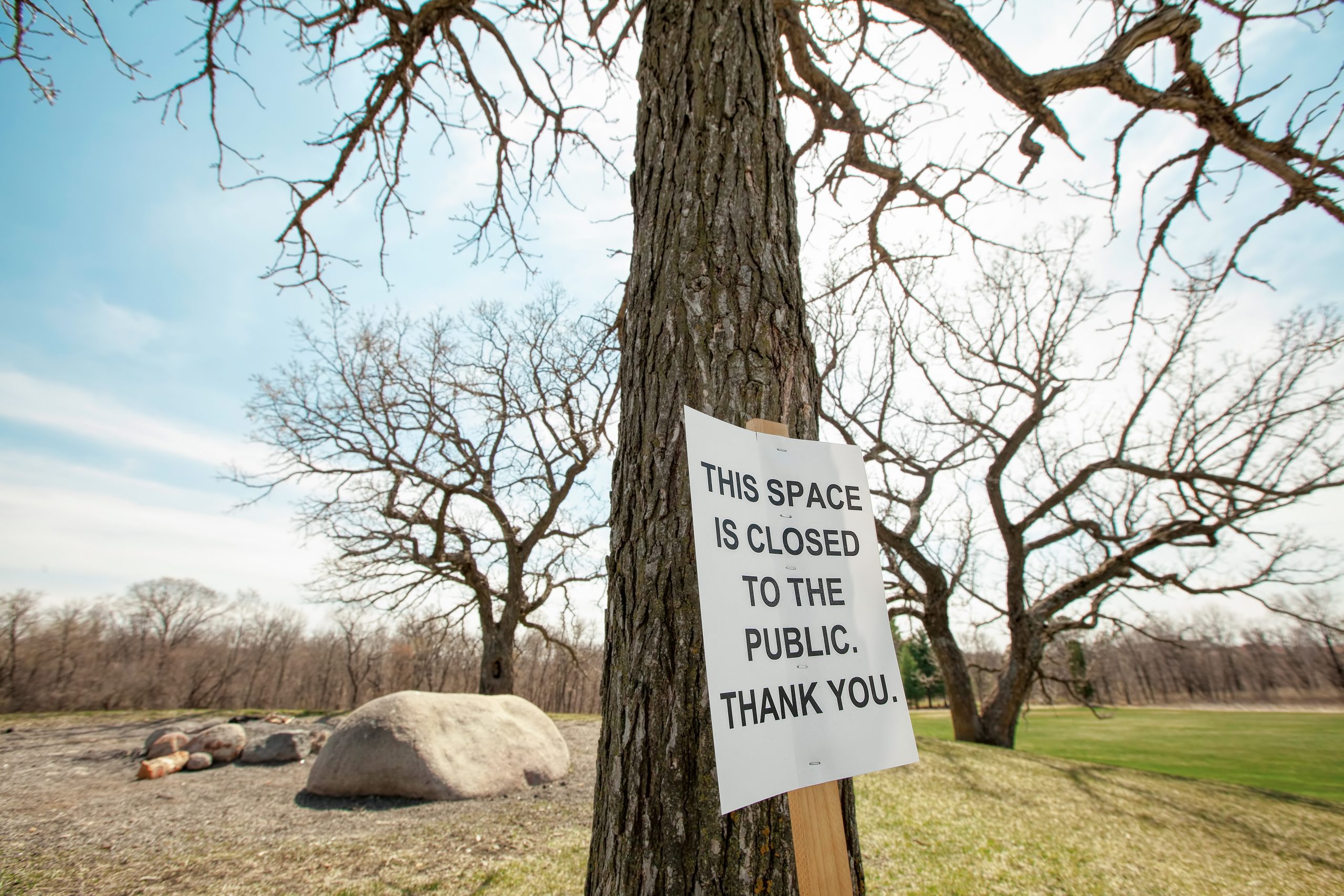
March is Minnesota’s cruelest month. Winter-weary Midwesterners search for any glimpse of spring: temps slowly warming, daylight hours stretching, and maybe, if we’re lucky, a bit of green poking through the dirty snow. Then, just as our hopes start to rise, we’re hit with another blizzard or two.
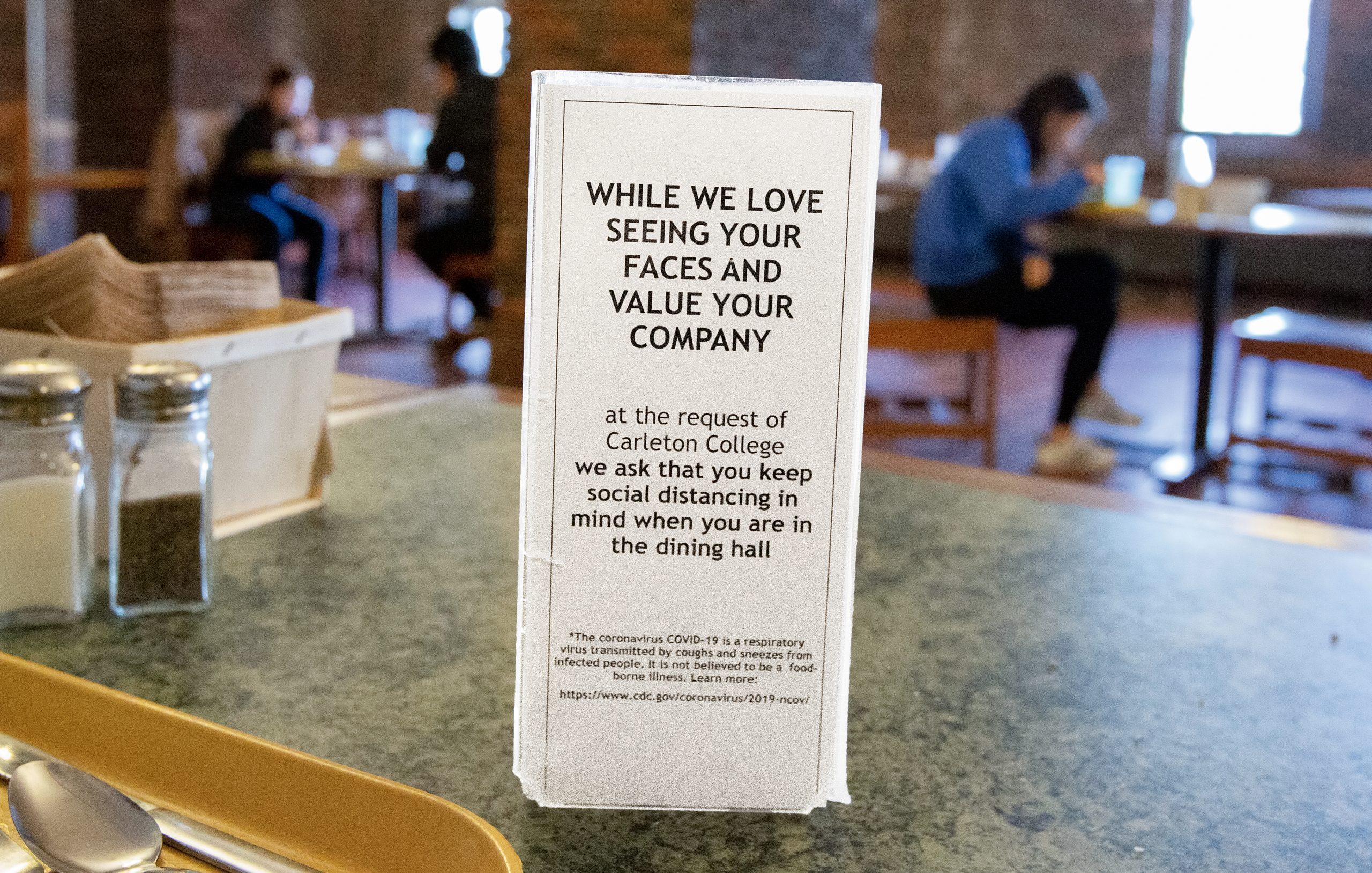
This year, the Ides of March brought something different entirely. As Kirkland, Washington, became a COVID-19 hotspot, followed by New York, and then LA, Americans had to accept that the novel coronavirus was not exclusively an Asian or European phenomenon.
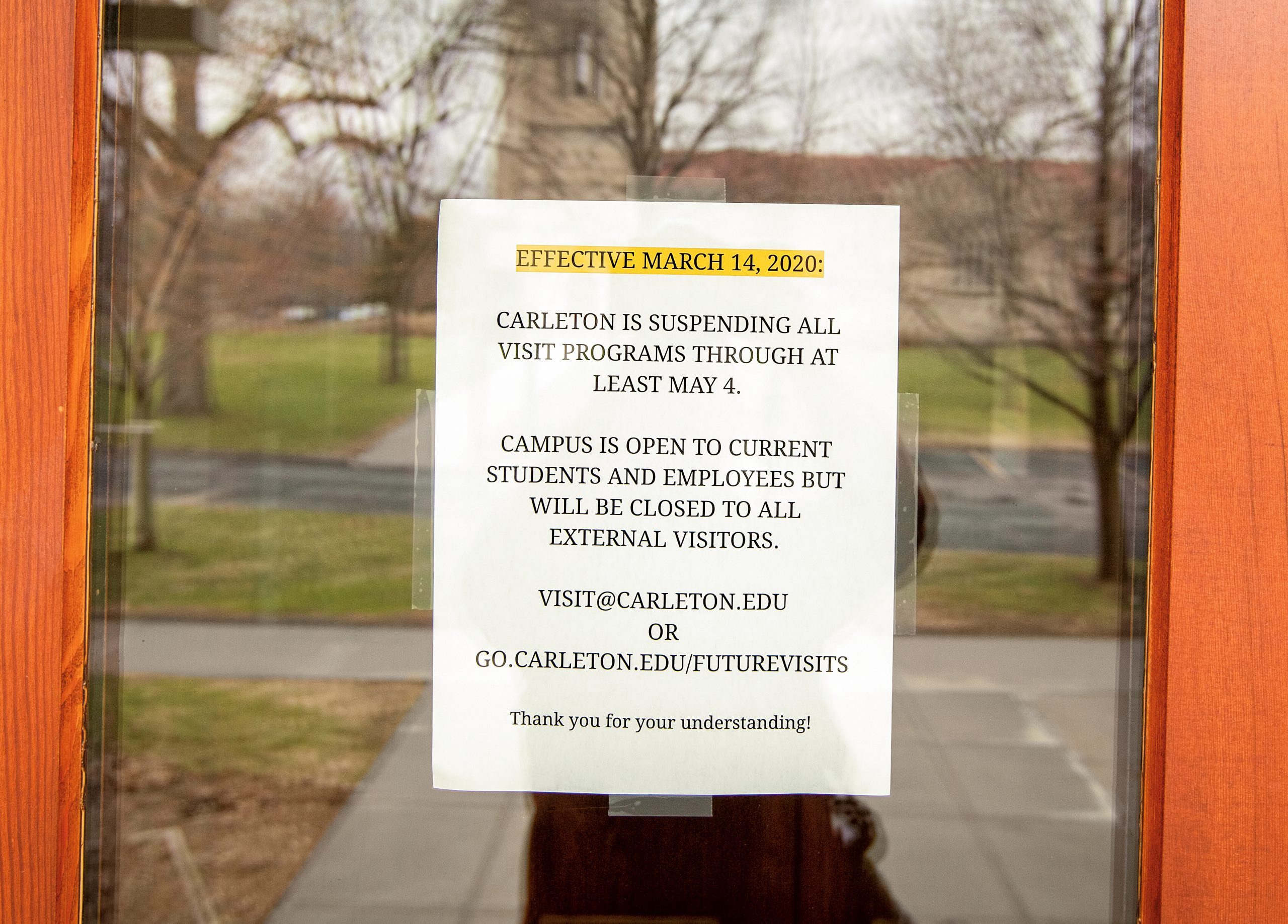
Winter classes were just wrapping up when Carleton president Steve Poskanzer announced the cancellation of all off-campus studies trips for the following term, and then extended spring break by a week to allow faculty members time to prepare for online-only instruction. Most students packed up their dorm rooms and headed home, not knowing if they’d be returning in a few weeks, as college leaders briefly hoped, or not at all.
While the majority of Carleton staff and faculty members began working remotely in mid-March, several essential employees reported in person to serve the 260 mostly international students who remained on campus. Dining, custodial, security, and facilities staff were among the heroic workers who populated a now almost-deserted campus. We are grateful for their service
In early April, photographer John Noltner visited Northfield to document the campus for the Voice. His images, together with headlines from the Carletonian—which continued to publish online through the term—gives you a sense of what this unprecedented spring looked and felt like on campus.
Foreign Correspondents
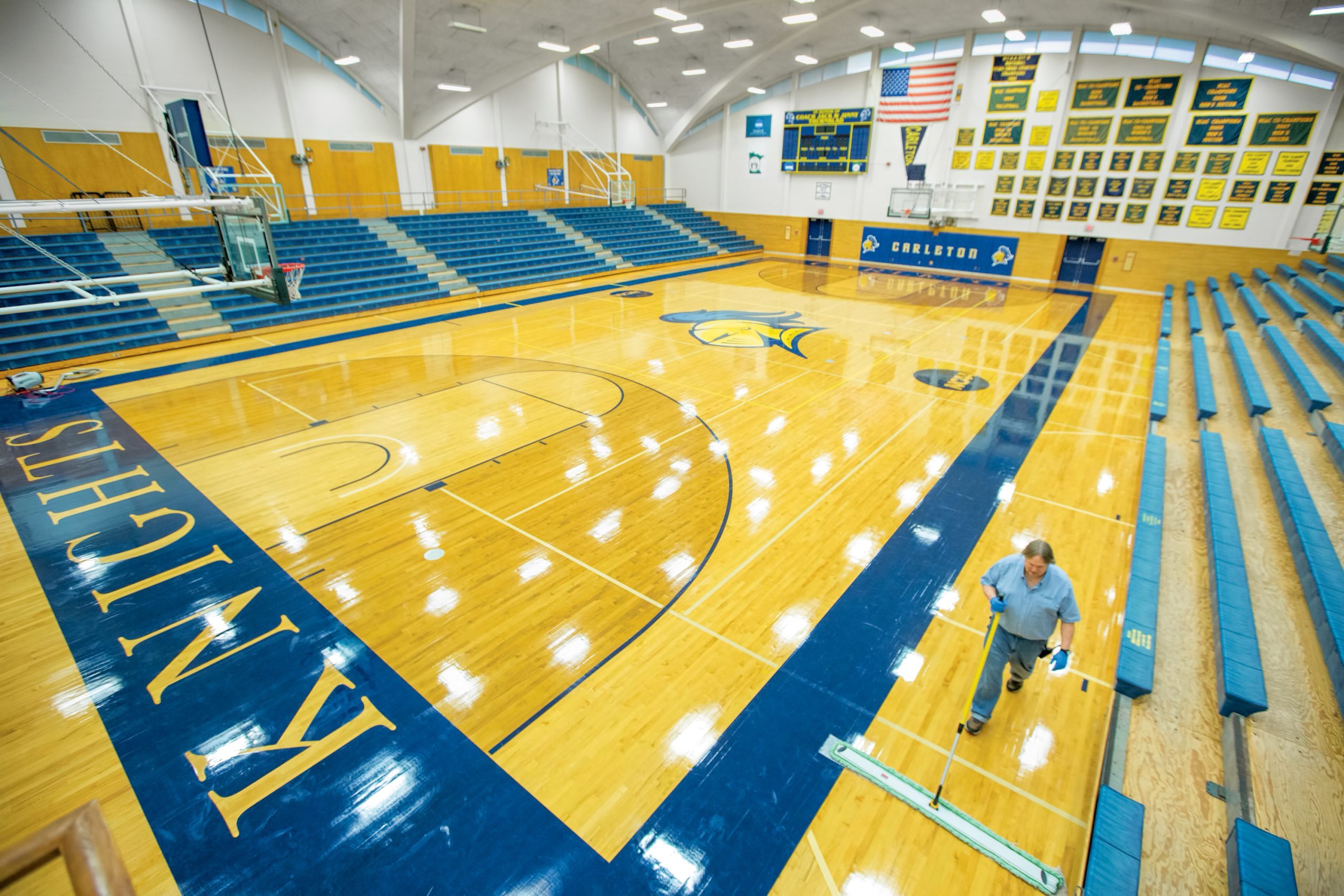
Carletonian editors Sam Kwait-Spitzer ’21 and Katy Gilbertson ’20 talk about the challenges of covering an empty campus and managing a remote staff, including the changes they’ve made to the paper as a consequence and launching a weekly newsletter, the Distance

Anyone still wondering about the value of hyperlocal media need look no further than the Carletonian. The weekly newspaper, usually available on Friday mornings at Sayles-Hill, is temporarily publishing exclusively online and distributing stories via a free weekly newsletter, appropriately dubbed the Distance. And the wide-ranging content, produced by some 30 student staff members and volunteers, is proving particularly indispensable for audiences who are trying to remain bonded with Carleton and one another as they work and study from home.
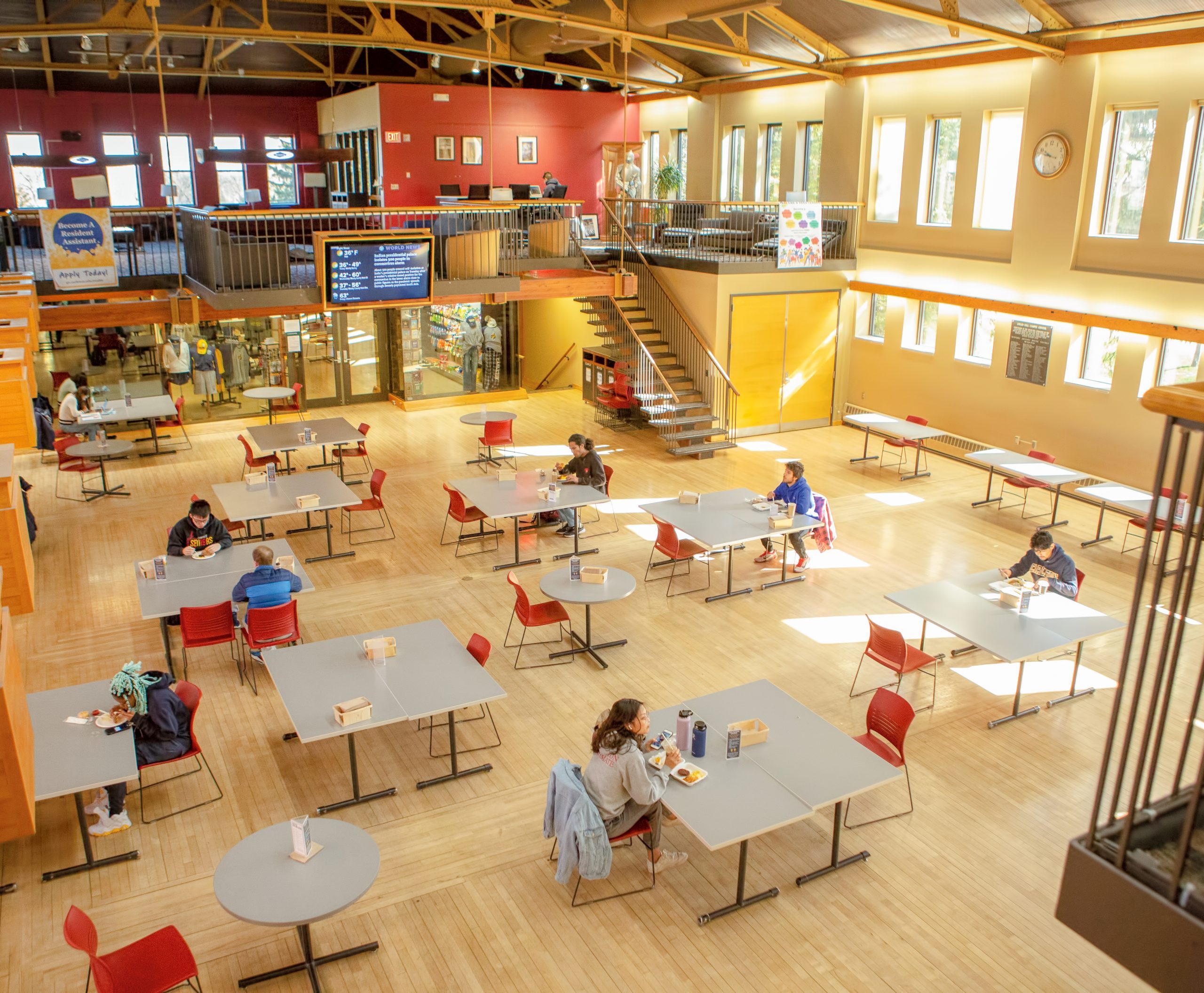
Katy Gilbertson ’20 and Sam Kwait-Spitzer ’21 are the current editors-in-chief. With little warning, they had to figure out how to both manage reporters virtually and cover campus remotely. At first, and as expected, most of the stories were about the immediate impact of COVID-19 on the college’s day-to-day operations. As spring term unfolded, though, the publication endeavored to become more than just a source of hard news and related opinion.
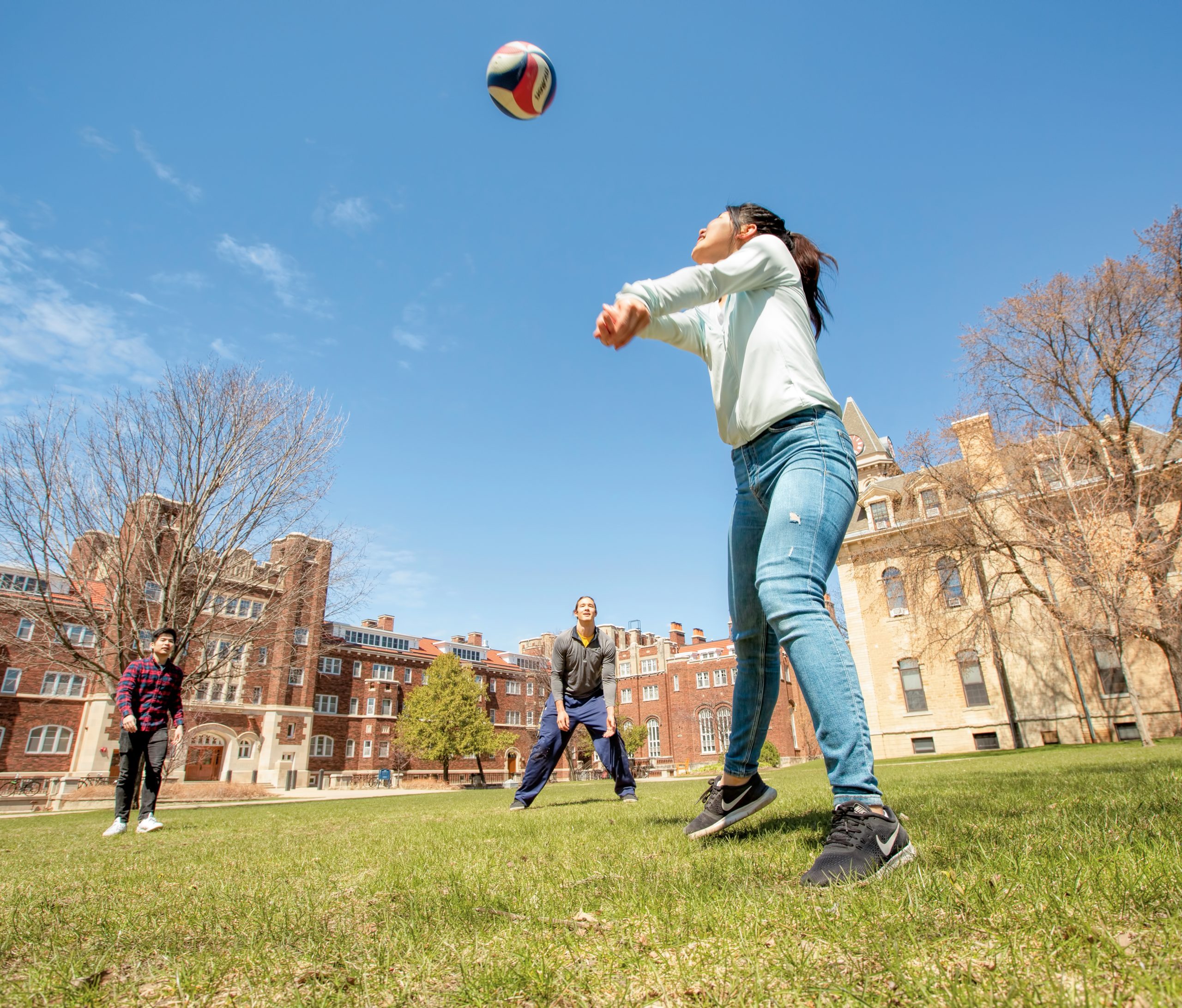
“The role of any newspaper in a community is always important, because it can provide answers and clarity,” Gilbertson says. “But there was another element I took for granted: the role we can play in providing community connection. Of course, people can no longer grab a copy at Sayles and give it a look while they’re having lunch or checking their email. But because the newsletter is sent out on the same day of the week, our hope is that it can be something everyone can look forward to reading and talking about.”
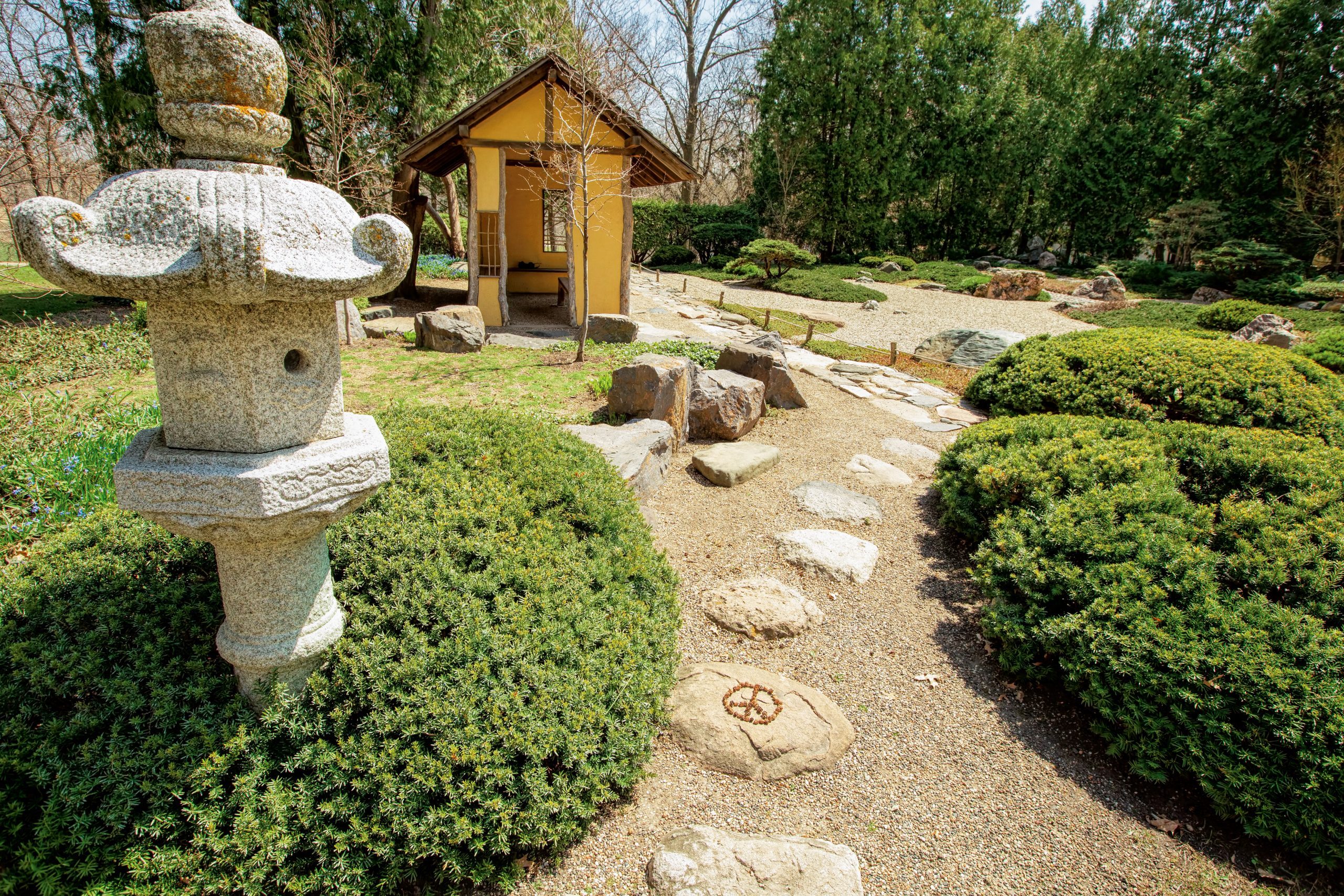
By going digital-only for the first time in the Carletonian’s 143-year history, staffers are also privy to data about usage and reader preferences, which has proven helpful as they make assignments and allocate resources. “Before, we printed and dropped 500 copies,” Kwait-Spitzer says. “Now we know how many subscribers we have, how many people are opening the newsletter, and what stories are most popular.
“There’s something really romantic, wonderful, and necessary about print journalism. And we won’t abandon that long-term. But one of our strategic goals has been to increase alumni readership, parent readership, and define the community more broadly. Producing this newsletter has proven a great way to focus even more on all of those things.”

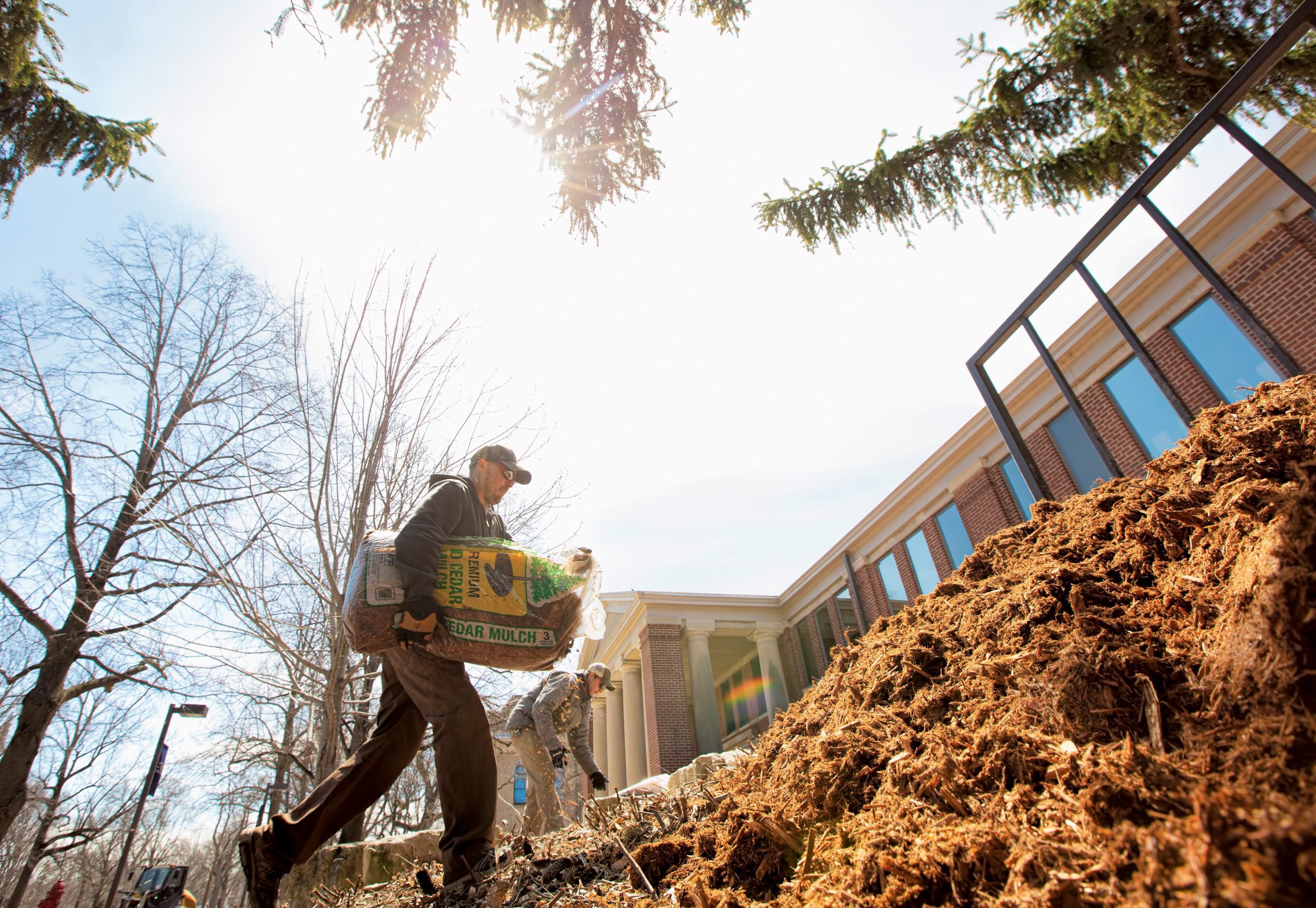
Student Journalism Across the Country Goes Online in the Face of COVID-19
Following President Steve Poskanzer’s email on Thursday, March 12, detailing Carleton’s plan to extend spring break and switch to online classes for the first half of spring term, the Carletonian relied heavily on social media outlets to share updates.

ITS Prepares for Online Classes by Training Faculty, Providing Computers to Students
This spring Carleton will hold some 300 classes online. Over 230 faculty members will be trained to transition their material to new platforms. As of yesterday, 1,940 students are enrolled to take these courses—students who are now in different time zones, with varying access to reliable technology and internet access.
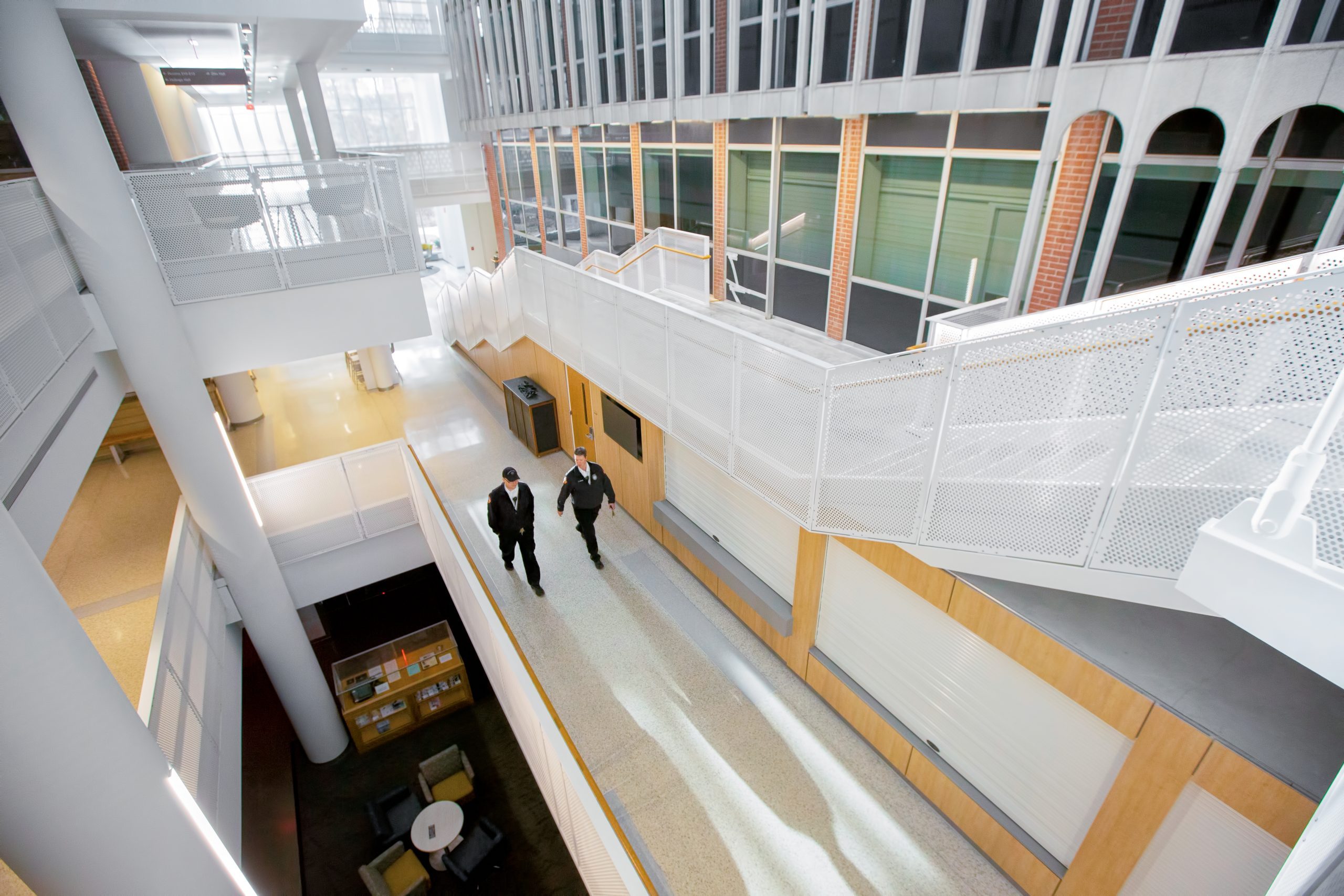
Admissions Office Shifts to Online Approach for Welcoming Accepted Students
How do you host campus tours, overnight visits, and Accepted Students Days when no one is allowed to visit campus? This is the challenge currently facing the Admissions Office, which has been uniquely impacted by the campus shutdown.
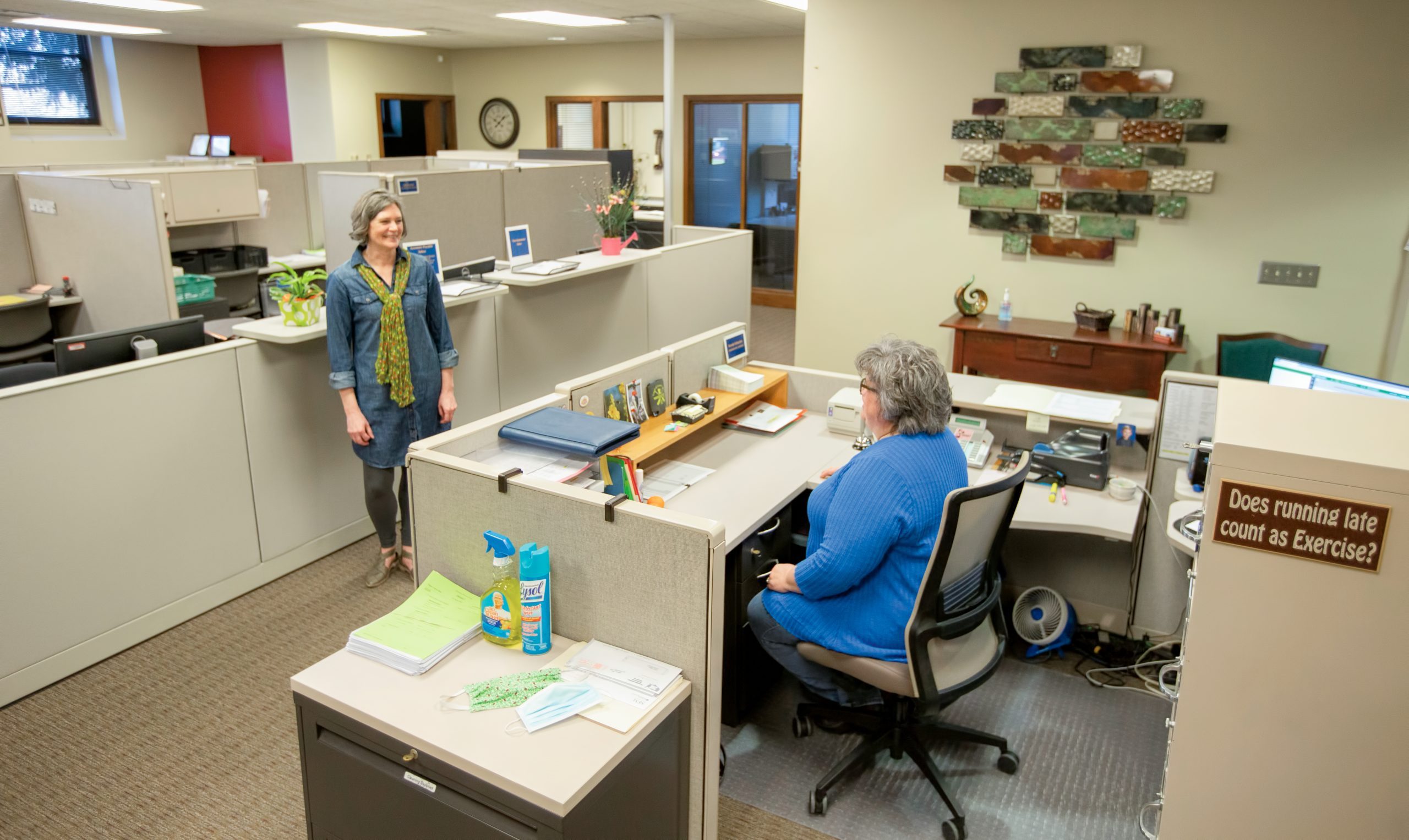
Students Organize GoFundMe Campaign to Support First-Generation and Low-Income Peers
Several Carleton students have created a GoFundMe campaign with a goal of $100,000 to be distributed to first-generation, low-income students who are disproportionately affected by Carleton’s closure for spring term.

The Streets Are Empty, but Not the Arb
Sunlight, chirping birds, the greening earth and the new spring air. The outside suddenly seems particularly delicious when we lose the freedom to it. Fortunately, the Arb is still providing the locals and remaining students with a safe and convenient access to enjoy the delightful (well, most of the time) Minnesota spring.

Grandparents Now Welcome: Student Clubs Adapt to Online Environment
Next Wednesday from 5:00 to 6:00 p.m. and Friday from 6:00 to 7:00 p.m., over 60 students will be dancing simultaneously to the song “Boss B*tch” over Zoom. Some students may be accompanied by siblings, others by grandparents.
Hopeful Words in a Wrenching Moment: Q&A with President Poskanzer
“This school has . . . more trust and goodwill and ability to pull together than any college or university that I’ve ever worked at, and we’ll draw upon those reservoirs right now. We will get through this, and we’ll get through this in a way that brings us closer together.”
